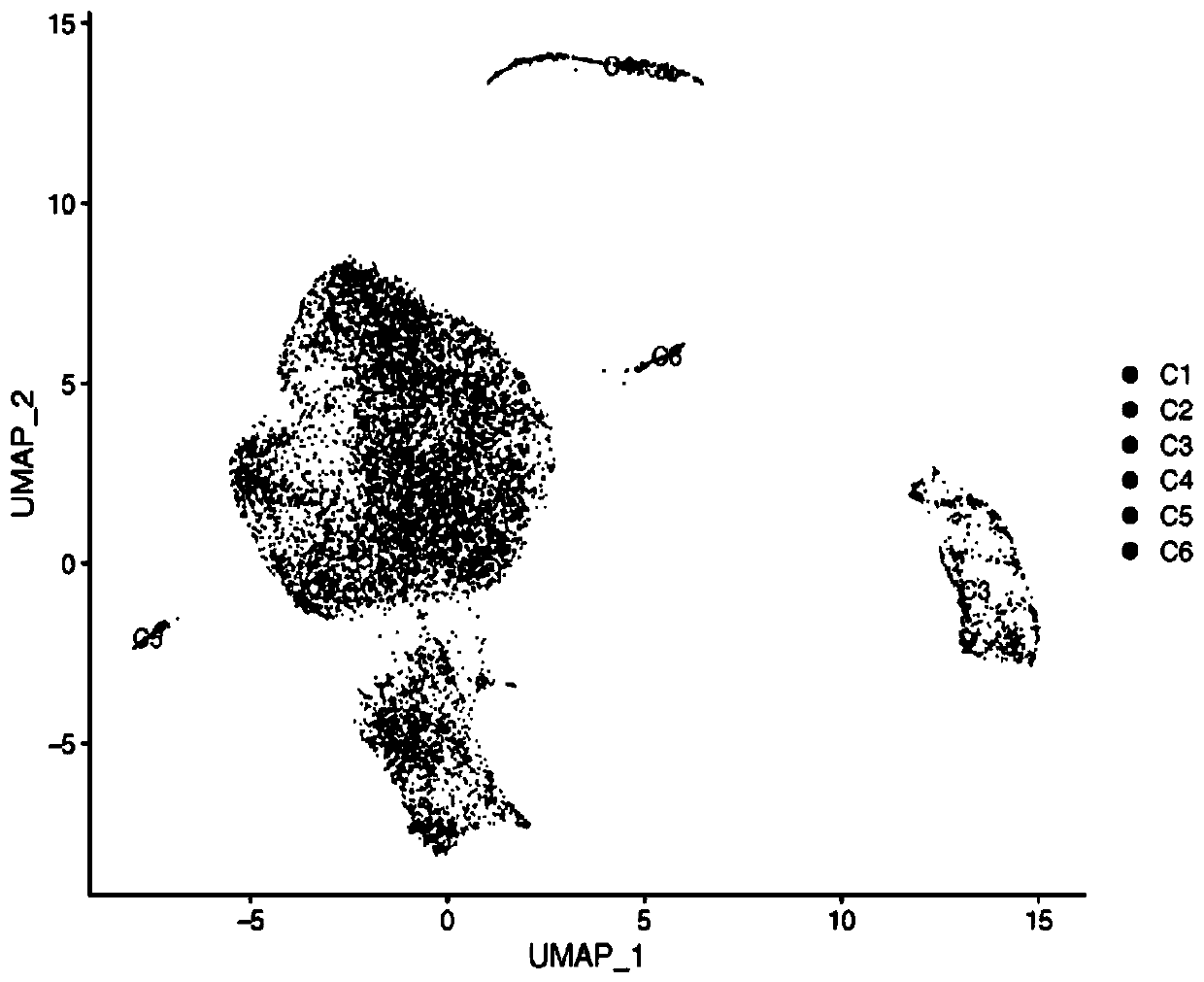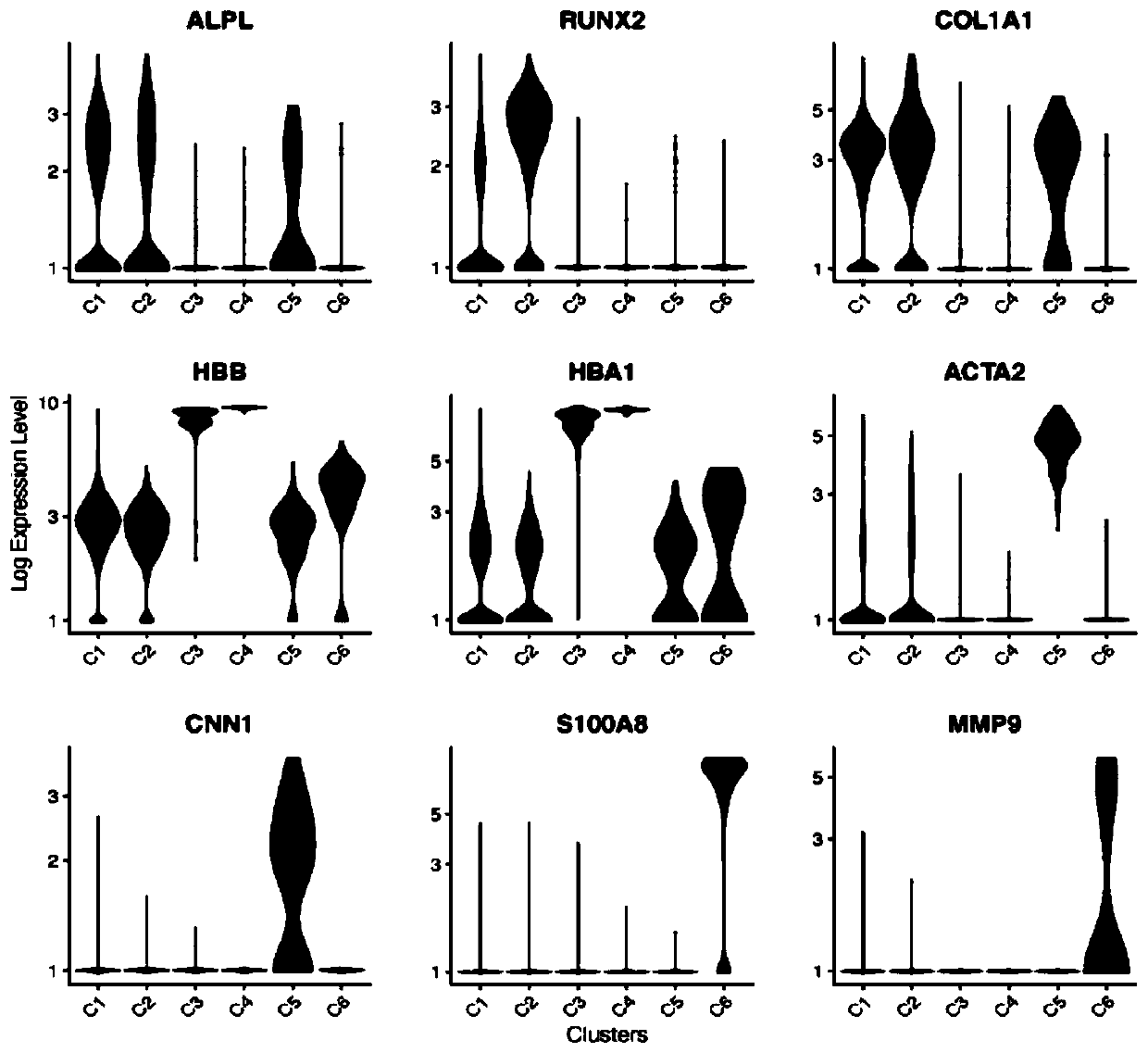Sorting method of human osteoblasts
An osteoblast and sorting technology, applied in the field of biomedicine, can solve the problem that the separation scheme of human osteoblasts cannot meet the requirements of single-cell sequencing, and achieve the effect of reducing cell impurities, high cell activity, and large number of cells
- Summary
- Abstract
- Description
- Claims
- Application Information
AI Technical Summary
Problems solved by technology
Method used
Image
Examples
Embodiment Construction
[0036] The technical solution of the present invention will be described in further detail below in conjunction with the accompanying drawings and embodiments.
[0037] Bone samples and flow cytometry results such as figure 1 shown. The cell data obtained after sorting can be clustered into 6 clusters according to the uniform manifold approximation and projection (UMAP) clustering method ( figure 2 ), the osteoblast-specific marker gene RUNX2 was only highly enriched in C1 and C2 ( image 3 ), were not expressed in other clusters, indicating the presence of other contaminating cells in our dataset. Contaminating cells are (1) two nucleated erythrocyte clusters C3 and C4 ( image 3 ); (2) a smooth muscle cell cluster C5, in which ACTA2 and CNN1 genes encode smooth muscle α-2 actin, which is specific for differentiated mature smooth muscle cells ( image 3 ); (3) a neutrophil cluster C6 ( image 3 ). The above analysis shows that based on ALPL + / CD45 / 31 / 34 - The human ...
PUM
 Login to View More
Login to View More Abstract
Description
Claims
Application Information
 Login to View More
Login to View More - R&D
- Intellectual Property
- Life Sciences
- Materials
- Tech Scout
- Unparalleled Data Quality
- Higher Quality Content
- 60% Fewer Hallucinations
Browse by: Latest US Patents, China's latest patents, Technical Efficacy Thesaurus, Application Domain, Technology Topic, Popular Technical Reports.
© 2025 PatSnap. All rights reserved.Legal|Privacy policy|Modern Slavery Act Transparency Statement|Sitemap|About US| Contact US: help@patsnap.com



